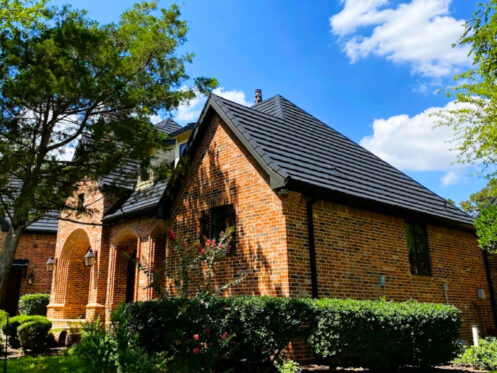Although we’re often aware big storms are coming, there are times they seem to come out of nowhere, such as the most recent tornado that hit close to home in Dallas, TX. As a commercial property owner and manager, you understand how significant storms of any kind can wreak havoc on your building’s roof. The good news, however, is you can take steps before the storm hits to keep damage to a minimum, or none at all.
That’s why regular maintenance – from a qualified, dependable roofing contractor – is crucial for keeping your roof ready for whatever type of weather or natural disaster hits. Ask the following questions to determine the readiness of your roof.
1. Does the roof surface have any visible tears or punctures?
Many things can cause tears and punctures in the roof’s membrane – from high winds to debris and falling limbs, but also foot traffic and sloppy construction and installation.
In most cases, tears and punctures are small enough that a roof replacement isn’t needed, but they can lead to water leaks and other damage if not addressed. Fixing them now protects from further damage if a storm hits.
2. Are there cracked or open seams in the skylights and pitch pans?
Externally, check your roof’s seams carefully around your skylights and pitch pans. These seams are usually the weakest point of any roof portion. Poorly-sealed seams can lead to a variety of issues, especially during a storm.
Pitch pans serve a crucial purpose because they seal out water in some of the roof’s most vulnerable areas. Internally, check the drywall around the skylight for evidence of water leaks, such as water stains and bulging. A problem with the flashing causes most skylight leaks.
3. Does the drainage system contain blockage?
Your building’s roof will get plenty of water exposure during a storm, and water can lead to plenty of damage on a poorly-maintained roof. If your gutters or drains are clogged, the excess water will have nowhere to go.
4. Is your drainage system cracked, bent, or loose?
It’s safe to say that cracked, bent, or loose gutters, scuppers, and downspouts aren’t going to hold up very well during big storms. Clogs and debris accumulation are common reasons why gutters are pulling apart. The joints of gutters become vulnerable due to weight or excess water.
5. Are rooftop vents and AC units secured in their supports?
Rooftop AC units and vents have several advantages for commercial buildings, including saving space and quietness. Make sure all of them are secure in their supports before a storm hits.
6. Are other movable items secured?
Check every other movable item on the roof before the storm hits. Ensuring that they are secure will prevent a lot of damage – even bodily harm during a storm. Much of the damage caused by storms involves HVAC equipment rolling across the roof membrane. But you can also remove garbage cans or signs that may become dangerous projectiles.
7. Are conduits, TV cables, pipes, and condensation lines secured?
Don’t forget about your roof’s condensation lines and other fixtures, such as TV cables that may be affected by a storm.
8. Are extra considerations/operational needs required?
You should cover all older skylights with a wood barrier or metal cage to protect them from flying debris. Also, make sure your building’s generator is operating at peak performance.
9. Have areas of water infiltration been identified?
Always look for areas of water infiltration, including open seams in membranes, joints between flashing and the roof cover, water ponding, and clogged drains and scuppers. It’s also important to check the inside of your building for signs of water infiltration so you can identify and patch those roof areas before the next storm hits.
10. Are nearby trees and bushes trimmed away from the roof?
Storms can cause overhanging tree limbs and branches to land on the roof or to scrape over its surface and create holes. Keep nearby trees and bushes trimmed.
Regular maintenance can keep your roof in great shape and storm-ready. Call the team at KPost Company to have your roof checked.

